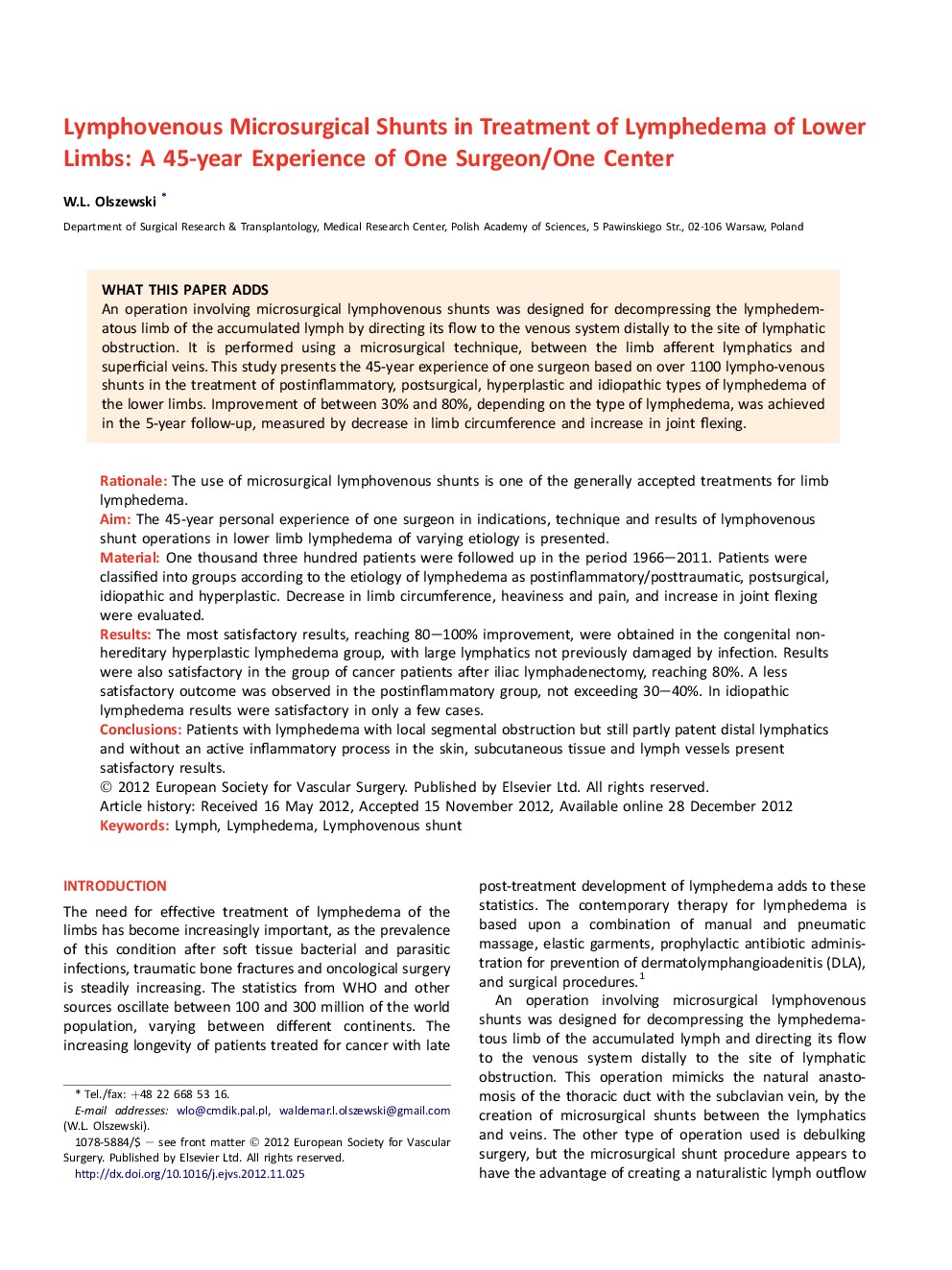| Article ID | Journal | Published Year | Pages | File Type |
|---|---|---|---|---|
| 2912939 | European Journal of Vascular and Endovascular Surgery | 2013 | 9 Pages |
RationaleThe use of microsurgical lymphovenous shunts is one of the generally accepted treatments for limb lymphedema.AimThe 45-year personal experience of one surgeon in indications, technique and results of lymphovenous shunt operations in lower limb lymphedema of varying etiology is presented.MaterialOne thousand three hundred patients were followed up in the period 1966–2011. Patients were classified into groups according to the etiology of lymphedema as postinflammatory/posttraumatic, postsurgical, idiopathic and hyperplastic. Decrease in limb circumference, heaviness and pain, and increase in joint flexing were evaluated.ResultsThe most satisfactory results, reaching 80–100% improvement, were obtained in the congenital non-hereditary hyperplastic lymphedema group, with large lymphatics not previously damaged by infection. Results were also satisfactory in the group of cancer patients after iliac lymphadenectomy, reaching 80%. A less satisfactory outcome was observed in the postinflammatory group, not exceeding 30–40%. In idiopathic lymphedema results were satisfactory in only a few cases.ConclusionsPatients with lymphedema with local segmental obstruction but still partly patent distal lymphatics and without an active inflammatory process in the skin, subcutaneous tissue and lymph vessels present satisfactory results.
